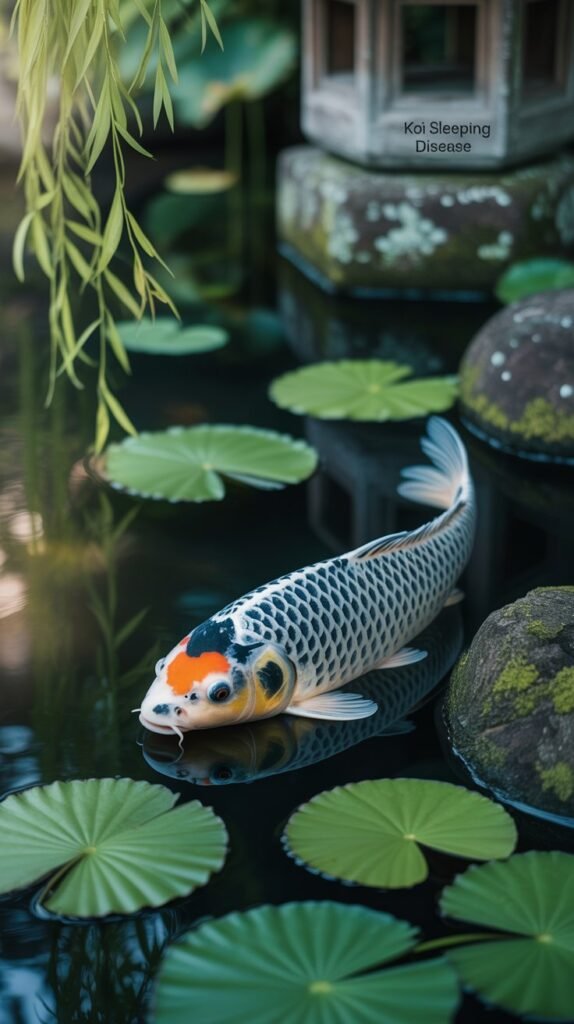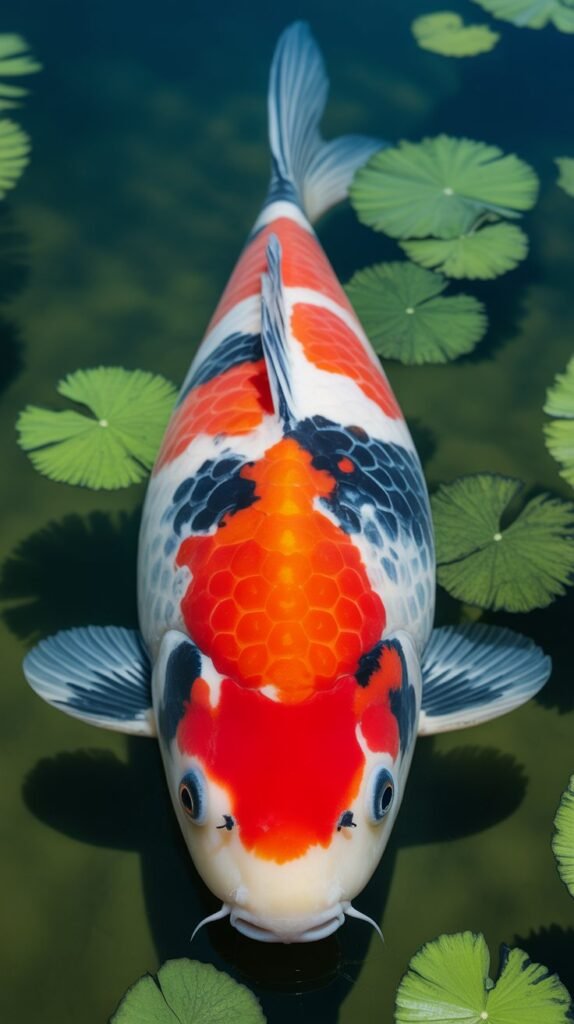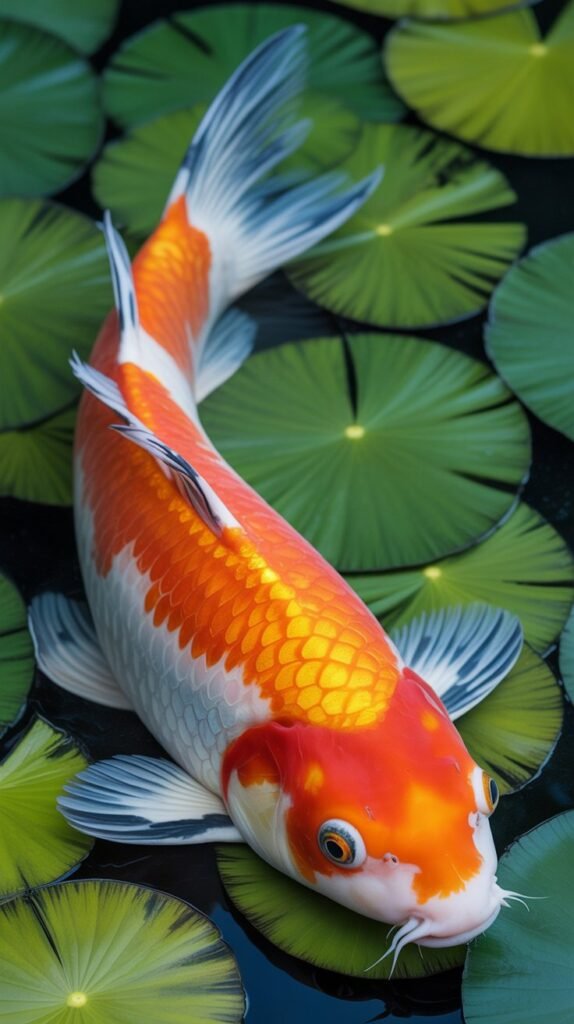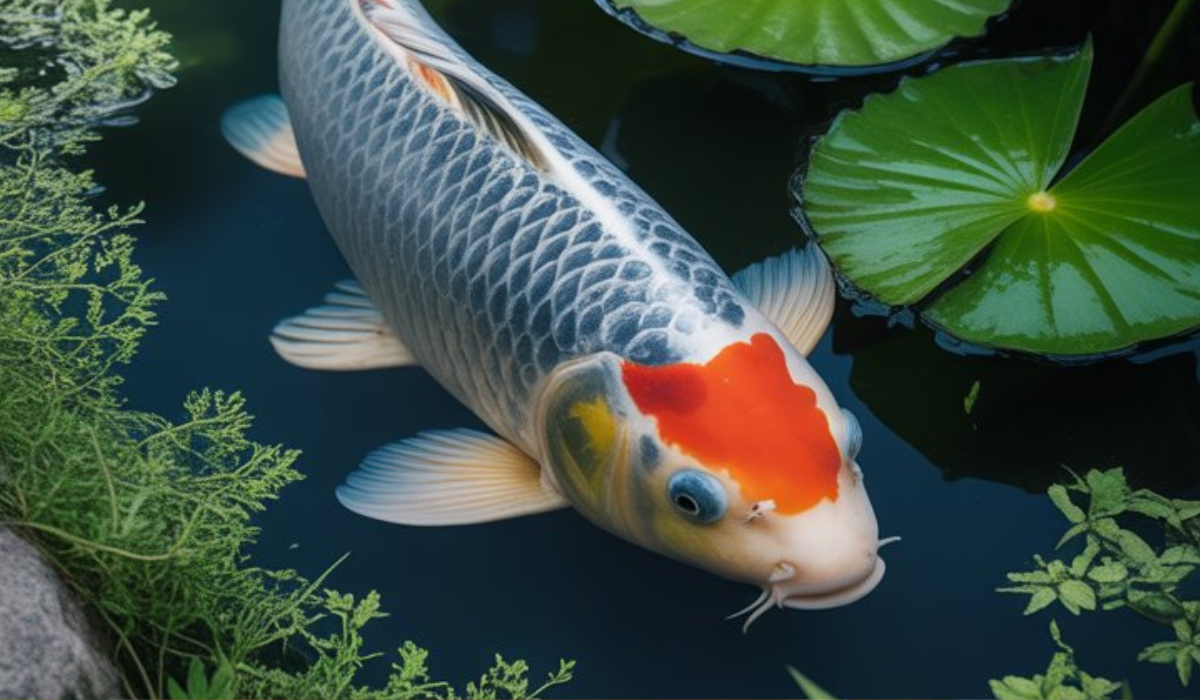Koi fish are among the most admired ornamental fish worldwide, cherished for their vibrant colors, calm swimming patterns, and cultural symbolism. Many pond owners and aquaculture farmers invest time, effort, and money to ensure their koi remain healthy and thrive in beautiful water gardens. However, koi are susceptible to a variety of diseases, some of which can be devastating if not properly managed. Among these, Koi Sleeping Disease (KSD) is one of the most misunderstood and alarming illnesses. Known for its unusual symptom of fish appearing as if they are “sleeping” at the bottom of the pond, this disease can lead to high mortality if left untreated.
Understanding koi sleeping disease is critical for both hobbyists and professionals, as early detection and preventive care can make a significant difference in survival rates. In this detailed guide, we will explore the causes, symptoms, diagnosis, prevention, and treatment of koi sleeping disease while also providing practical tips for koi keepers to protect their collections.
What is Koi Sleeping Disease?
Koi Sleeping Disease (KSD) is a viral infection caused by a Piscine Reovirus (PRV-like virus) that specifically affects koi and carp. Despite the name, it is not simply a condition where koi “sleep” for extended periods but rather a serious disease characterized by lethargy, weakness, and abnormal behavior. The disease is most dangerous for young koi, particularly fry and juveniles, though adults can also be affected under stressful conditions.

Koi sleeping disease typically occurs in environments where water temperatures range between 15°C and 25°C (59°F–77°F). Within this range, the virus becomes active and spreads rapidly among fish. Infected koi may look like they are resting at the bottom, often unresponsive to normal stimuli, which explains the name. Without proper care, mortality rates can reach 50–70%, making it a serious concern for koi enthusiasts and breeders.
History and Discovery of Koi Sleeping Disease
The disease was first documented in Japan during the 1970s, where koi breeding is a centuries-old tradition. It quickly gained attention due to its unusual symptoms and the heavy losses it caused among prized koi populations. Over time, cases were reported across Asia and eventually spread worldwide with the global koi trade. Today, koi sleeping disease remains a challenge in both small ornamental ponds and larger aquaculture operations.
Causes of Koi Sleeping Disease
The primary cause of koi sleeping disease is a Piscine Reovirus-like agent. This virus specifically targets the immune system and energy metabolism of koi, weakening their ability to resist secondary infections. Several contributing factors can worsen the severity of outbreaks:
- Poor water quality: High levels of ammonia, nitrites, or low oxygen stress the fish and make them more vulnerable.
- Overcrowding: Too many fish in a pond increases viral spread and stress levels.
- Temperature fluctuations: Rapid changes in water temperature can weaken koi immune defenses.
- Stress factors: Handling, transportation, or sudden environmental changes can trigger outbreaks.
Unlike bacterial infections, koi sleeping disease cannot be treated directly with antibiotics. It is a viral condition, and management relies on supportive care and prevention.
Symptoms of Koi Sleeping Disease
Recognizing symptoms early is the key to minimizing losses. The most common and characteristic signs include:
Behavioral Symptoms
- Lethargy: Koi become extremely inactive and settle at the bottom of the pond.
- “Sleeping” posture: Fish appear as if they are lying down or resting unnaturally.
- Unresponsiveness: Infected koi show little to no reaction to external disturbances such as feeding or movement.
- Loss of appetite: Affected fish often stop eating, which leads to weakness.
Physical Symptoms
- Clamped fins: Fins are held close to the body rather than spread out.
- Mucus coating: Excessive mucus production on skin and gills.
- Gasping at the surface: Due to impaired gill function and oxygen intake.
- Skin lesions: Secondary bacterial or fungal infections may cause ulcers or patches.
- Gill damage: Gills may appear pale, swollen, or necrotic.
Because these symptoms overlap with other koi diseases, proper diagnosis is essential to confirm koi sleeping disease.
Diagnosis of Koi Sleeping Disease

Accurate diagnosis is necessary to separate koi sleeping disease from conditions like bacterial gill disease, koi herpesvirus disease, or parasitic infestations. Diagnostic methods include:
- Clinical observation: Watching for classic lethargy and bottom-dwelling “sleeping” behavior.
- Microscopic examination: Checking gill and mucus samples for parasites to rule out other causes.
- PCR testing: Detecting viral genetic material through laboratory analysis.
- Histopathology: Examining tissue samples for viral impact on gills and internal organs.
Because koi sleeping disease is viral, testing through PCR or sequencing is often the most reliable confirmation method.
Transmission of Koi Sleeping Disease
Koi sleeping disease spreads through:
- Direct fish-to-fish contact – Healthy koi exposed to infected fish can contract the virus.
- Waterborne transmission – The virus can remain in pond water for a short period.
- Contaminated equipment – Nets, buckets, and other tools can spread the virus between ponds.
- Latent carriers – Surviving fish may harbor the virus without showing symptoms, transmitting it later during stress.
This high transmission rate makes quarantine and biosecurity essential to prevention.
Mortality and Impact of Koi Sleeping Disease
The mortality rate of koi sleeping disease varies depending on the age of fish, environmental conditions, and management response. Juveniles experience the highest mortality, often 50–70%, while adults are more resilient but may still suffer losses under stressful conditions. The disease also causes indirect damage:
- Economic losses: For koi breeders and sellers, an outbreak can devastate valuable stocks.
- Emotional impact: For hobbyists, losing cherished koi to disease can be heartbreaking.
- Trade restrictions: Countries with frequent outbreaks may face stricter koi import and export rules.
Treatment of Koi Sleeping Disease
Currently, there is no direct cure for koi sleeping disease, as it is caused by a virus. However, several management strategies can help reduce mortality and support recovery:
Supportive Care
- Temperature management: Maintaining stable temperatures around 25–27°C (77–81°F) helps boost koi immunity.
- Water quality improvement: Frequent water changes, proper filtration, and aeration reduce stress.
- Oxygen supplementation: Strong aeration supports weakened fish.
Secondary Infection Control
- Salt treatments: Adding salt (0.3–0.5%) reduces osmotic stress and prevents some parasites.
- Antibiotics: While they do not treat the virus, they may help with bacterial infections that arise due to weakened immunity.
Nutritional Support
- High-quality diet: Feeding immune-boosting food with vitamins C and E enhances resistance.
- Garlic or herbal additives: Some koi keepers use natural supplements to support recovery.
Isolation and Quarantine
- Remove sick fish to quarantine tanks to prevent further spread.
- Quarantine new koi for at least 3–4 weeks before mixing with existing fish.
With supportive care, survival rates can improve significantly, though recovered fish may remain carriers.
Prevention of Koi Sleeping Disease
Since there is no cure, prevention is the best approach. Key preventive measures include:
- Strict quarantine protocols for all new koi before introducing them into a pond.
- Regular health monitoring for signs of unusual behavior or lethargy.
- Water quality management to keep ammonia, nitrites, and pH levels in safe ranges.
- Avoid overcrowding to reduce stress and transmission risks.
- Disinfection of equipment before moving between ponds.
- Purchase koi only from trusted, certified disease-free sources.
Implementing strong biosecurity practices greatly reduces the risk of koi sleeping disease outbreaks.
Long-Term Management and Research

Research into koi sleeping disease is ongoing, particularly in Japan and Europe where koi farming is a major industry. Current studies focus on:
- Developing effective vaccines to protect against the virus.
- Understanding genetic resistance among different koi strains.
- Identifying environmental triggers that activate the virus in latent carriers.
While no vaccine is commercially available yet, advances in aquaculture science may lead to breakthroughs that provide long-term solutions.
FAQs About Koi Sleeping Disease
Q1: What is koi sleeping disease?
It is a viral infection in koi and carp caused by a Piscine Reovirus-like virus, leading to lethargy and bottom-dwelling behavior.
Q2: Why do koi look like they are sleeping?
The virus weakens their immune and energy systems, causing them to lie still at the bottom of the pond, appearing as if they are sleeping.
Q3: Is koi sleeping disease contagious?
Yes, it spreads quickly through direct contact, water, contaminated equipment, and latent carriers.
Q4: What are the most common symptoms?
Lethargy, clamped fins, loss of appetite, excessive mucus, pale gills, and lying motionless at the bottom.
Q5: Can koi sleeping disease kill my fish?
Yes, it can cause mortality rates of 50–70% in juveniles and significant losses in adults under stress.
Q6: Is there a treatment for koi sleeping disease?
There is no direct cure. Supportive care such as stable water temperature, oxygenation, and good nutrition improves survival chances.
Q7: Can recovered fish still carry the virus?
Yes, survivors may become latent carriers, potentially spreading the disease later.
Q8: How can I prevent koi sleeping disease?
Quarantine new fish, maintain excellent water quality, disinfect equipment, and avoid overcrowding.
Q9: Does koi sleeping disease affect humans?
No, it only affects koi and carp and poses no risk to people.
Q10: Is there a vaccine available?
As of now, no commercial vaccine exists, though research is ongoing.

